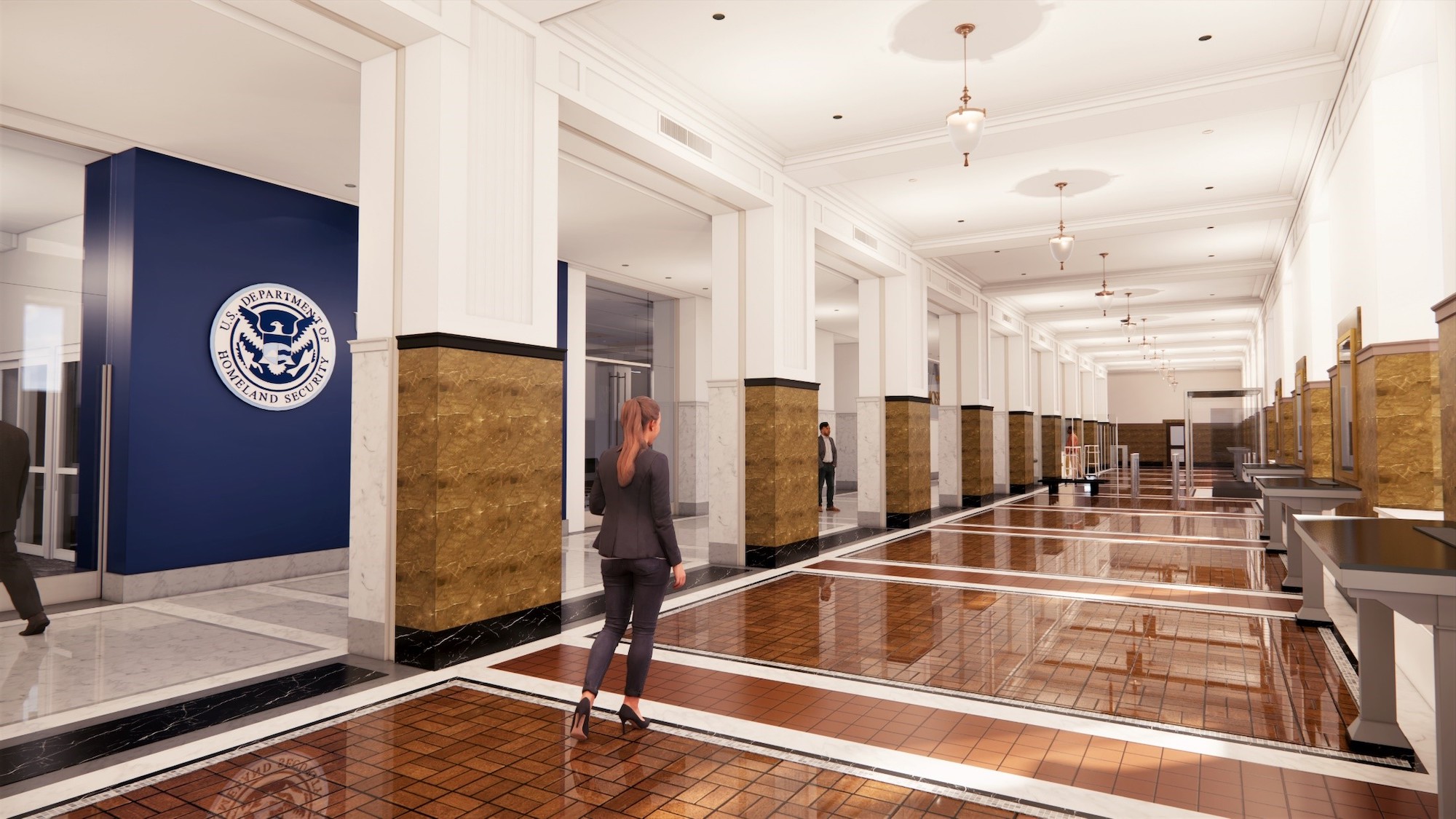In downtown Salt Lake City, the Frank E. Moss U.S. Courthouse is being transformed into a modern workplace for about a dozen federal agencies. By providing offices for agencies previously housed elsewhere, the adaptive reuse project is expected to realize an annual savings for the federal government of up to $6 million in lease costs.
Built in 1905 as a federal courthouse and post office, the building underwent renovations and expansions in 1912 and 1932. By 2020, the building sat largely vacant. Its unreinforced masonry construction and its proximity to the Wasatch Fault made it the most at-risk building in the U.S. General Services Administration’s entire portfolio, according to a statement from HOK.
The design by HOK and Trivers Associates restores the building’s terrazzo, marbled lobbies and corridors, and wood-paneled courtrooms to their original quality. The project team is working both to preserve the building and to create a “building within a building” that meets the latest federal earthquake risk management standards.
The seismic upgrades include reinforced concrete shear walls and thousands of epoxy dowels added to the existing masonry walls, as well as new foundations and steel collector elements below each floor to tie the original building with two additions.
Costing a reported $116 million, the 250,000-sf project also will provide the latest workplace technology and amenities, including breakout rooms, lounges, and cultural galleries. Wellness features include indoor bicycle parking, showers, and lactation and wellbeing rooms on every floor.
The building, which is targeting LEED Gold certification, will use 50% less energy and 30% less water than a similarly sized building, and it will reduce embodied carbon by 59% compared to a new replacement building. A chilled-beam heating/cooling system will reduce airborne particulates, improve efficiency, and lower carbon emissions.
On the Building Team:
Owner: U.S. General Services Administration
Design architect and architect of record: HOK
Historic architect: Trivers Associates
MEP/FP engineer: HOK, Spectrum Engineers, Henderson Engineers
Structural engineer: HOK, SGH, Dunn Associates
Construction: Big D, Jacobs
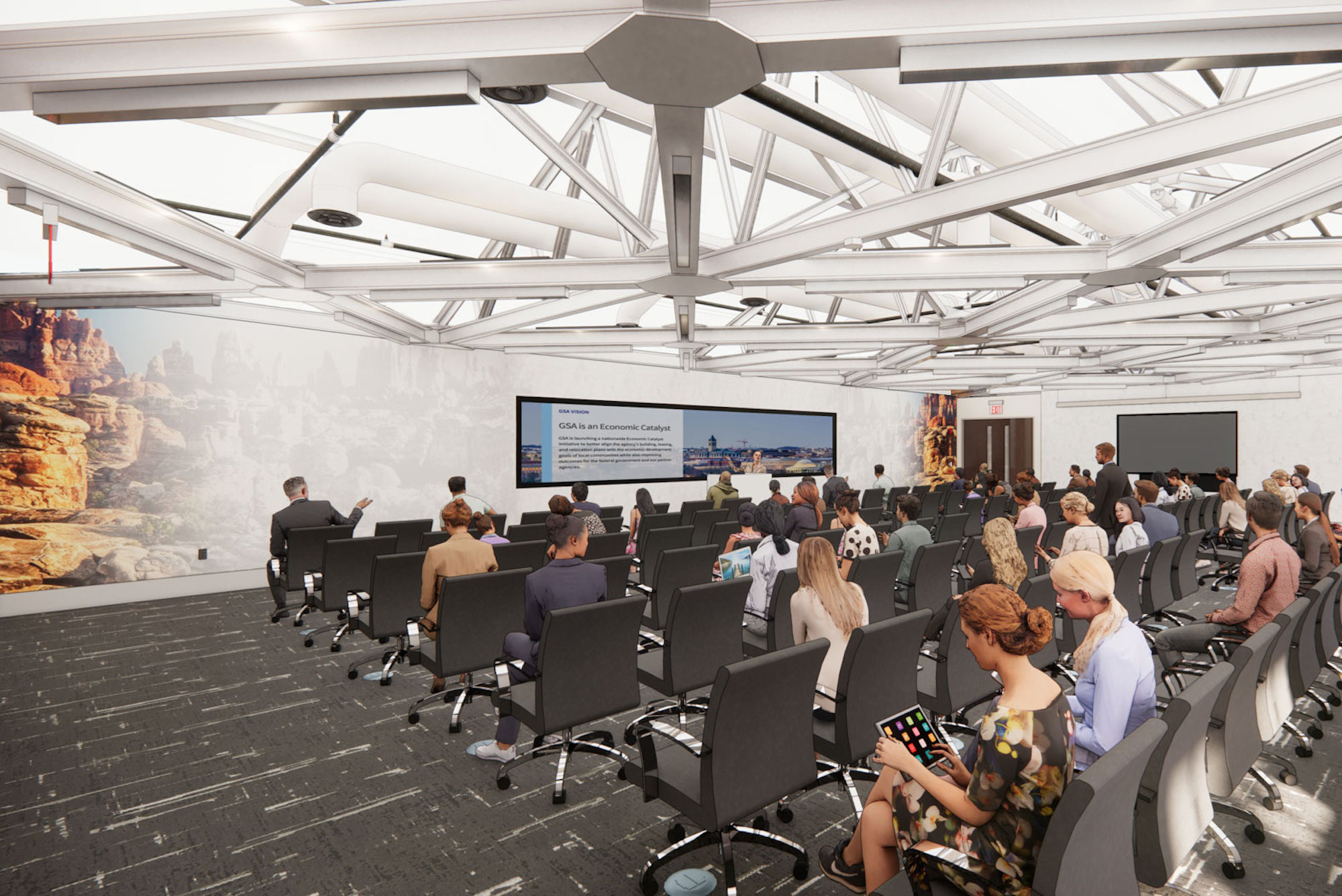
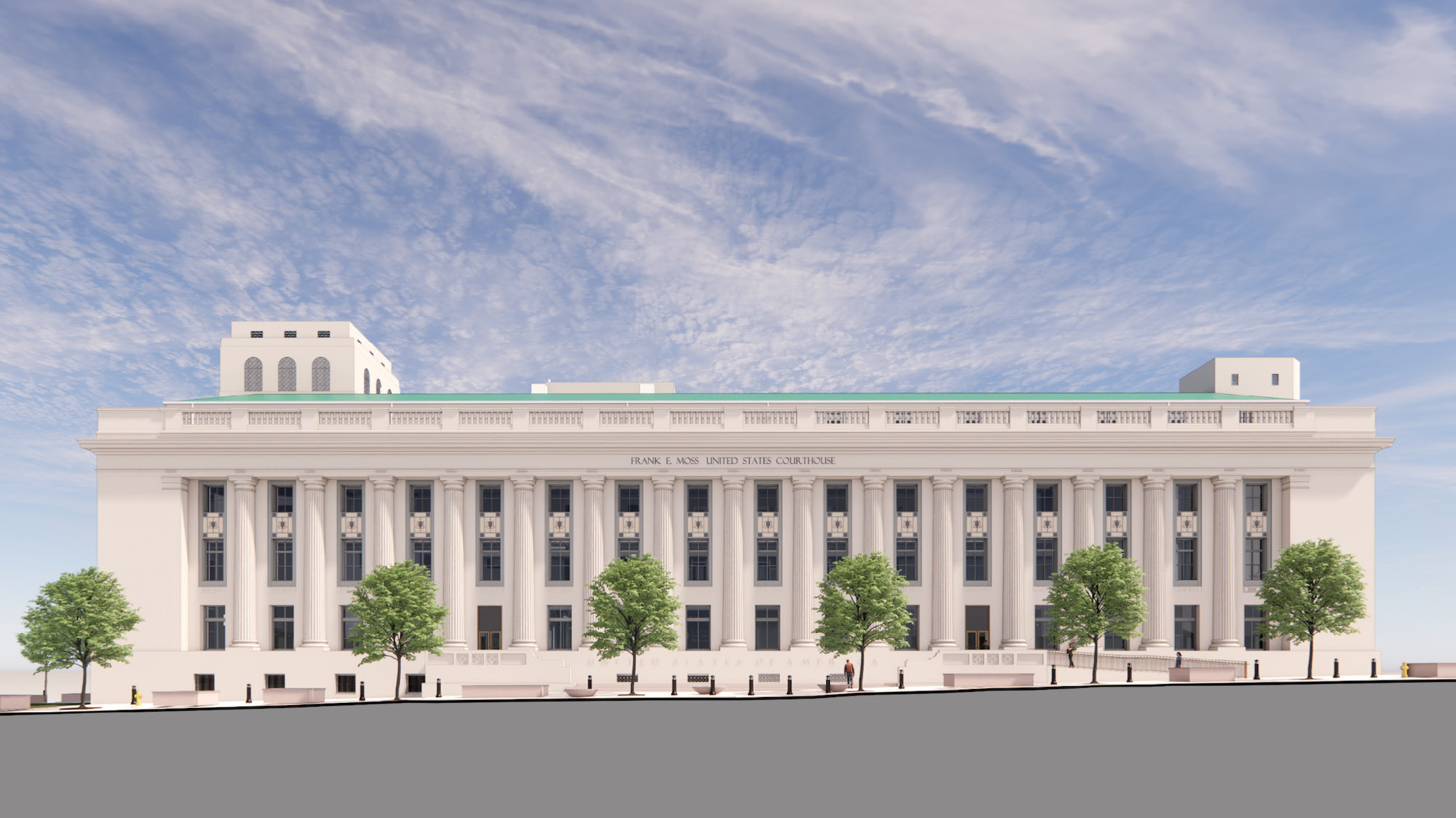

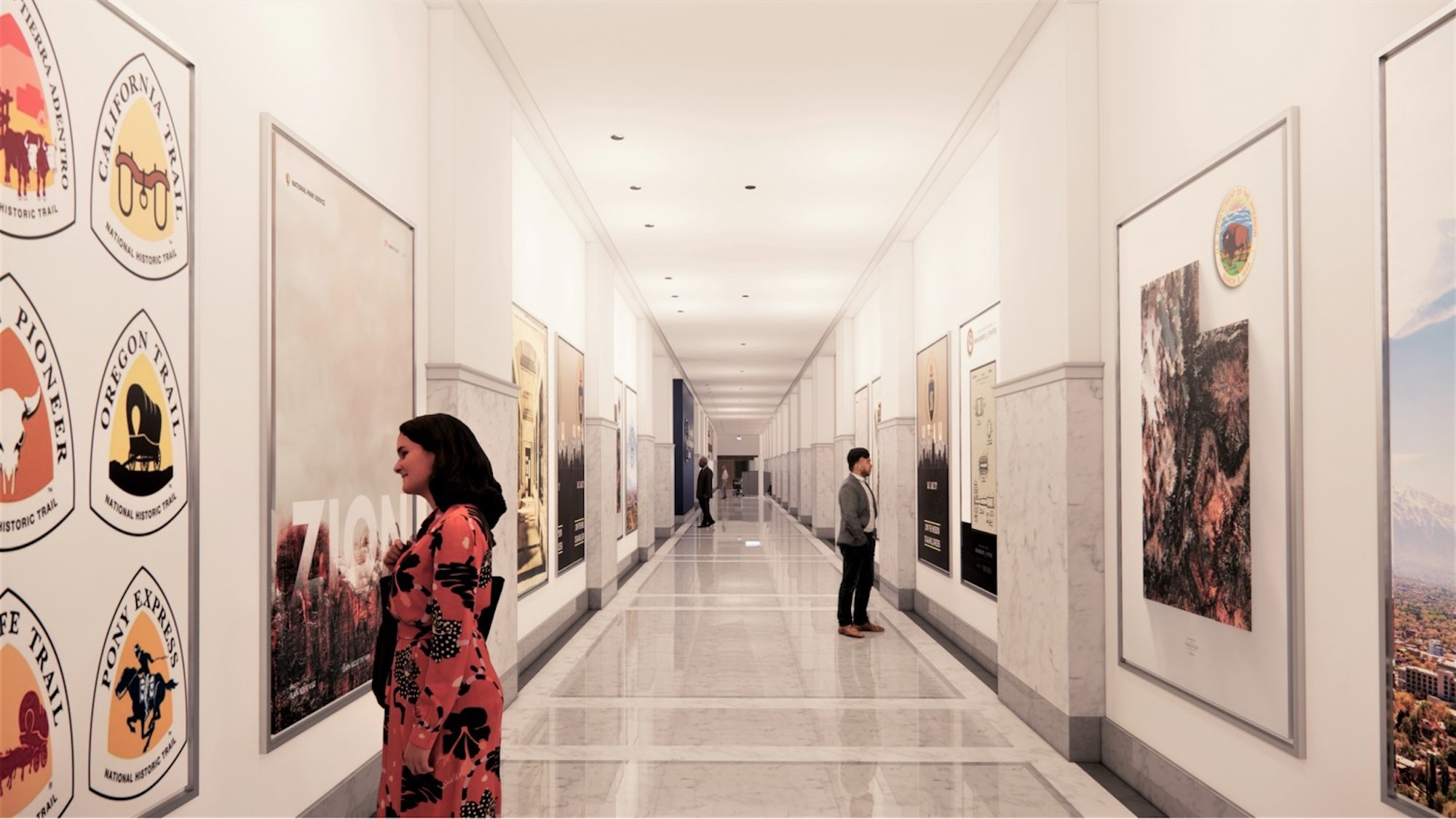
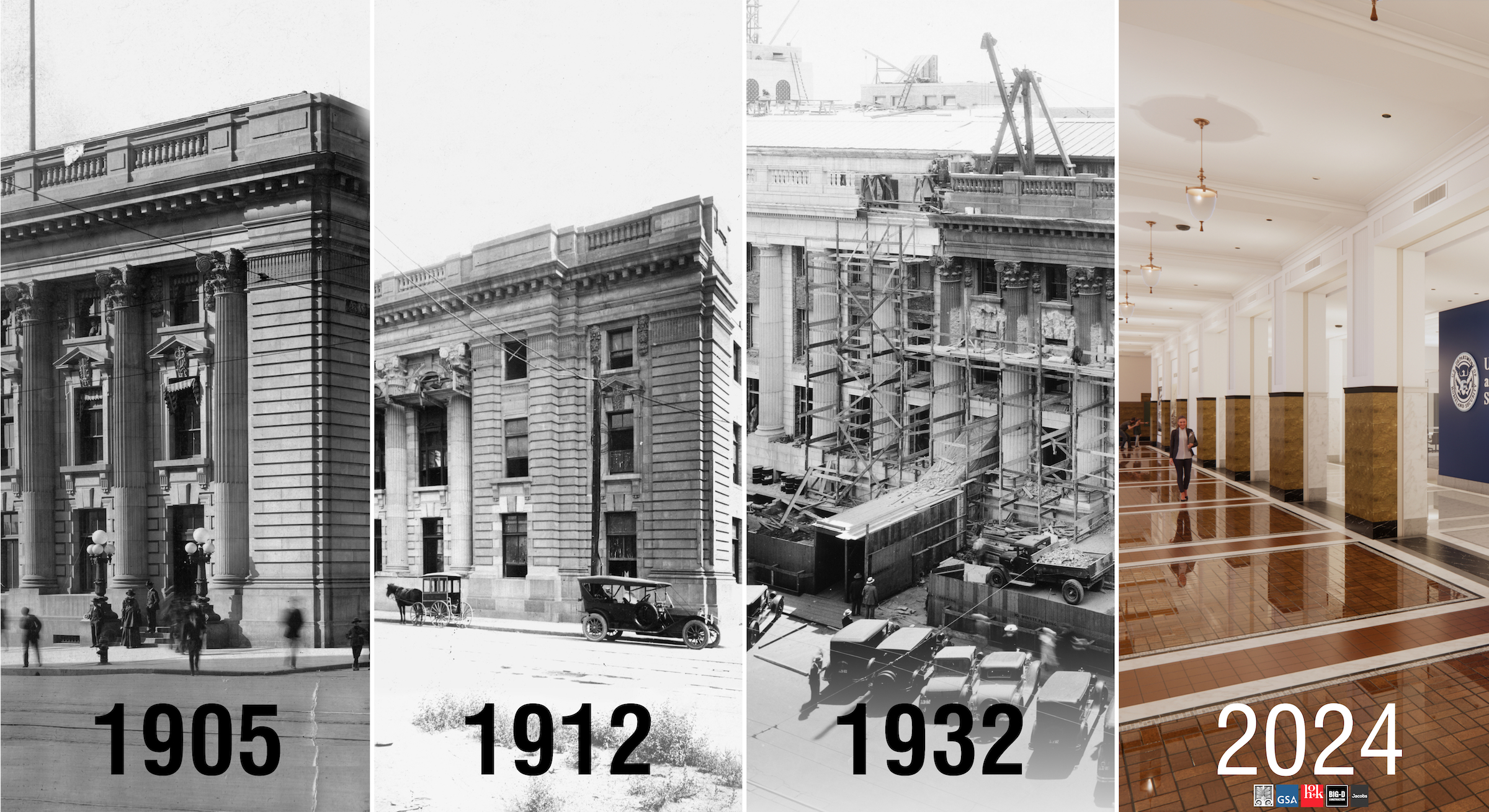
Related Stories
Education Facilities | Aug 4, 2024
A former supersonic wind tunnel becomes a new educational facility for transportation design
The Mullin Transportation Design Center at ArtCenter College of Design in Pasadena, Calif., provides access for full-scale vehicular models, replicating a professional design studio.
Adaptive Reuse | Jul 30, 2024
Empty mall to be converted to UCLA Research Park
UCLA recently acquired a former mall that it will convert into the UCLA Research Park that will house the California Institute for Immunology and Immunotherapy at UCLA and the UCLA Center for Quantum Science and Engineering, as well as programs across other disciplines. The 700,000-sf property, formerly the Westside Pavilion shopping mall, is two miles from the university’s main Westwood campus. Google, which previously leased part of the property, helped enable and support UCLA’s acquisition.
Great Solutions | Jul 23, 2024
41 Great Solutions for architects, engineers, and contractors
AI ChatBots, ambient computing, floating MRIs, low-carbon cement, sunshine on demand, next-generation top-down construction. These and 35 other innovations make up our 2024 Great Solutions Report, which highlights fresh ideas and innovations from leading architecture, engineering, and construction firms.
Adaptive Reuse | Jul 12, 2024
Detroit’s Michigan Central Station, centerpiece of innovation hub, opens
The recently opened Michigan Central Station in Detroit is the centerpiece of a 30-acre technology and cultural hub that will include development of urban transportation solutions. The six-year adaptive reuse project of the 640,000 sf historic station, created by the same architect as New York’s Grand Central Station, is the latest sign of a reinvigorating Detroit.
MFPRO+ News | Jun 24, 2024
‘Yes in God’s Backyard’ movement could create more affordable housing
The so-called “Yes in God’s Backyard” (YIGBY) movement, where houses of worship convert their properties to housing, could help alleviate the serious housing crisis affecting many communities around the country.
Multifamily Housing | Jun 14, 2024
AEC inspections are the key to financially viable office to residential adaptive reuse projects
About a year ago our industry was abuzz with an idea that seemed like a one-shot miracle cure for both the shockingly high rate of office vacancies and the worsening housing shortage. The seemingly simple idea of converting empty office buildings to multifamily residential seemed like an easy and elegant solution. However, in the intervening months we’ve seen only a handful of these conversions, despite near universal enthusiasm for the concept.
Adaptive Reuse | Jun 13, 2024
4 ways to transform old buildings into modern assets
As cities grow, their office inventories remain largely stagnant. Yet despite changes to the market—including the impact of hybrid work—opportunities still exist. Enter: “Midlife Metamorphosis.”
Adaptive Reuse | Jun 6, 2024
Latest phase of London redevelopment completes two new buildings
Developers are creating a neighborhood for 25,000 residents and workers.
MFPRO+ News | Jun 3, 2024
New York’s office to residential conversion program draws interest from 64 owners
New York City’s Office Conversion Accelerator Program has been contacted by the owners of 64 commercial buildings interested in converting their properties to residential use.
Adaptive Reuse | May 15, 2024
Modular adaptive reuse of parking structure grants future flexibility
The shift away from excessive parking requirements aligns with a broader movement, encouraging development of more sustainable and affordable housing.


